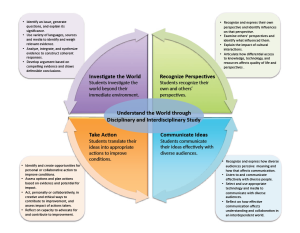When I was accepted to the TGC/IREX program over a year ago, I was so excited to have the opportunity to travel abroad and deepen my teaching practice. What I learned along the way is that the idea most people have about global education only touches the surface. As teachers we teach a few lessons through the year that include ideas and perspectives from different cultures, but rarely do we consistently engage in all aspects of global education.
Global Education is a means to provide context for lessons being taught in any classroom, grade level or subject. When teaching through this context, students are engaged in researching global issues through the context of culture, location and history. Students make connections and use those connections to broaden their understanding of the current topic and the world. Finally, students can create a plan and take action regarding the issue at hand.
Integrating global education throughout my school is critical because it is preparing students for the world they will live in. Businesses are no longer limited by location. We live in a world where technology allows people from across the world to collaborate and work together. Additionally, our society is becoming more mobile and with that mobility comes even more need to be able to engage in perspective taking and work with people from all backgrounds. Allowing our students to explore the world will enhance their ability to thrive.
The following image, taken from Education for Global Competence, gives an overview of the four components of global education, how they are interrelated, and the skills students can demonstrate as they become proficient in each area.
It is important for students to engage in global skills. The following video is a prime example!
This website is dedicated to sharing my experiences as I have participated in this program and provide information and resources to teachers wanting to know more!

